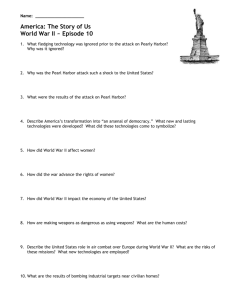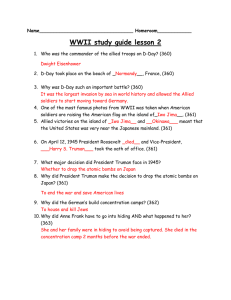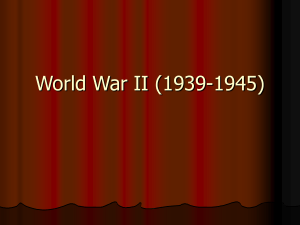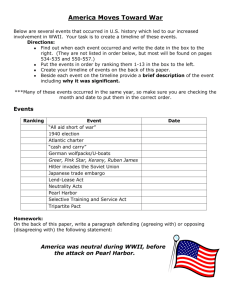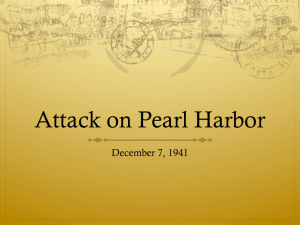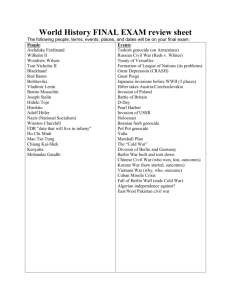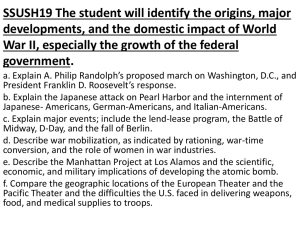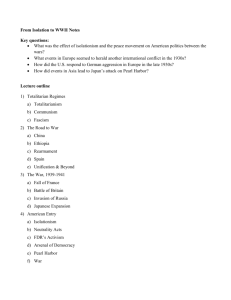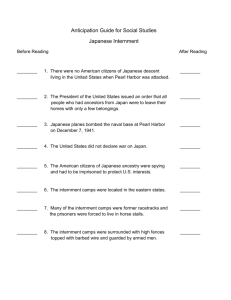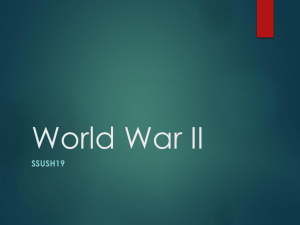USH Test
advertisement
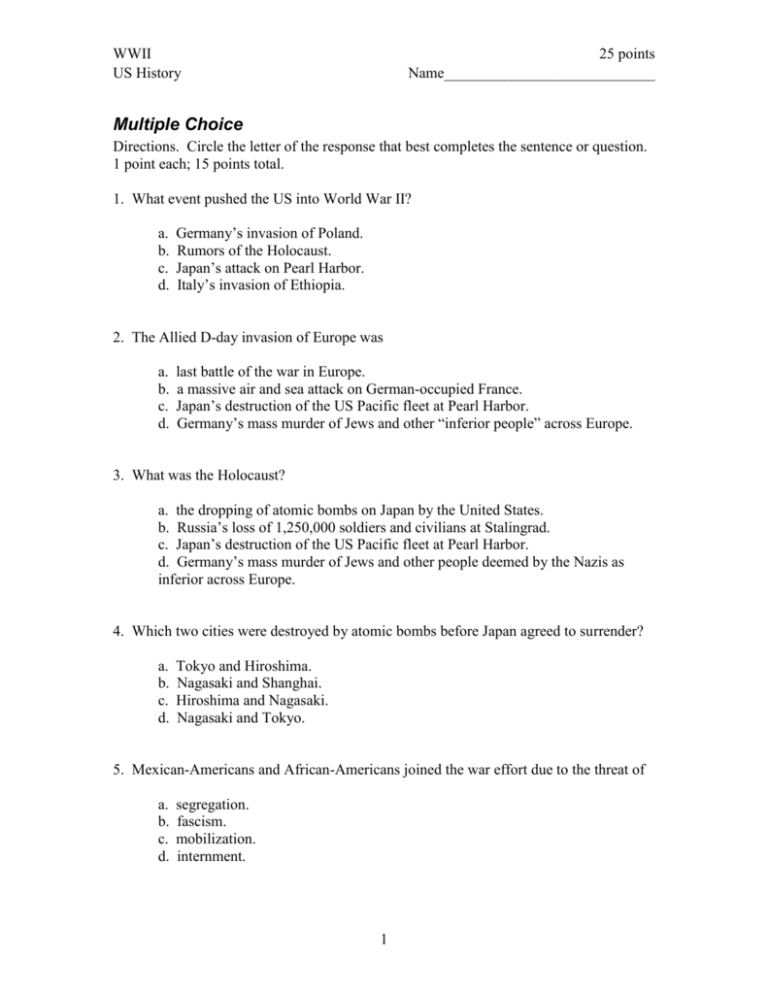
WWII US History 25 points Name____________________________ Multiple Choice Directions. Circle the letter of the response that best completes the sentence or question. 1 point each; 15 points total. 1. What event pushed the US into World War II? a. b. c. d. Germany’s invasion of Poland. Rumors of the Holocaust. Japan’s attack on Pearl Harbor. Italy’s invasion of Ethiopia. 2. The Allied D-day invasion of Europe was a. b. c. d. last battle of the war in Europe. a massive air and sea attack on German-occupied France. Japan’s destruction of the US Pacific fleet at Pearl Harbor. Germany’s mass murder of Jews and other “inferior people” across Europe. 3. What was the Holocaust? a. the dropping of atomic bombs on Japan by the United States. b. Russia’s loss of 1,250,000 soldiers and civilians at Stalingrad. c. Japan’s destruction of the US Pacific fleet at Pearl Harbor. d. Germany’s mass murder of Jews and other people deemed by the Nazis as inferior across Europe. 4. Which two cities were destroyed by atomic bombs before Japan agreed to surrender? a. b. c. d. Tokyo and Hiroshima. Nagasaki and Shanghai. Hiroshima and Nagasaki. Nagasaki and Tokyo. 5. Mexican-Americans and African-Americans joined the war effort due to the threat of a. b. c. d. segregation. fascism. mobilization. internment. 1 WWII US History 6. Internment of Japanese Americans took place in all these states EXCEPT a. b. c. d. California. Delaware. Arizona. Washington. 7. The day that will go down in infamy' describes a. b. c. d. D-day. El Alamein. Stalingrad. Pearl Harbor. 8. A main reason for US neutrality in the 1930s was the country’s a. b. c. d. belief in the domino theory. disillusionment resulting from World War I. strong approval of political conditions in Europe. vastly superior military and naval strength throughout the world. 9. At the outbreak of both World War I and World War II in Europe, public opinion in the US generally favored a. b. c. d. remaining neutral. entering the war on the side of the Allies. invading Europe in order to acquire territory. settling the conflict through an international peace organization. 10. The appeasement policy followed by Western European leaders in the late 1930s was based primarily on the belief that war could be avoided by a. b. c. d. satisfying Hitler’s desire for territorial expansion. encouraging communist expansion into Nazi Germany. limiting the development of Germany’s armed forces. appealing to the League of Nations for international cooperation. 2 WWII US History 11. An important effect of World War II on US foreign policy was a a. b. c. d. refusal to become involved in world affairs. smaller role for the President in foreign policy and national security issues. stronger commitment to collective security and world leadership. willingness to intervene only when the national economy is involved. 12. What was a major effect of World War II on women and minorities in the US? a. b. c. d. They were drafted into the military. They had new opportunities in the workforce. They received equal voting rights for the first time. They were granted equal pay for equal work. 13. President Roosevelt rallied Americans to “become the great arsenal of democracy” to help a. b. c. d. South Korea against North Korea. Jiang Jeshi against Mao Zedong. the British and the French appease Hitler. Britain and the USSR against the Axis powers. 14. Which act effectively ended the Congressional policy of neutrality? a. b. c. d. The Taft-Hartley Act. The Smith Act. The Lend-Lease Act. The Reciprocity Act. 15. Reduction of the loss of American lives in the Pacific was a primary consideration in a. b. c. d. relocation of Japanese-Americans to internment camps. Truman’s decision to use the atomic bomb. rationing food and critical materials on the home front. forming the United Nations. 3 WWII US History Matching Directions. Match the word or phrase with its corresponding definition. 1 point each; 10 points total. ___1. Atlantic Charter A. US general who commanded D-day and Allied invasions of the European mainland. ___2. Lend-Lease Act B. Restrictions placed on civilian buying of unlimited amounts of goods to ensure adequate supplies for military. ___3. Island hopping C. May 8, 1945—the end of World War II in Europe. ___4. Manhattan Project D. The Allied forces commander in the Philippines in December 1941. ___5. rationing E. Program proposed by Secretary of State George Marshall in 1947 under which the US supplied economic aid to European nations to help them rebuild after World War II. ___6. Dwight D. Eisenhower F. Significant Allied victories in the Pacific which were the turning points in the Pacific war. ___7. D-day G. American strategy employed in the Pacific war to attack strategically important but less defended islands in the drive to the main islands of Japan. ___8. VE day H. Law passed in 1941 that allowed the US to ship arms and other supplies without immediate payment to nations fighting the Axis powers. ___9. Douglas MacArthur I. The code name for the research and development of the atomic bomb. J. 1941 declaration of principles in the Us and Great Britain set forth their goals in opposing the Axis powers; formed the basis of the United Nations charter at the end of the war. K. Land-sea operation in Normandy, France on June 6, 1944 that broke German lines; a major turning point of the war in Europe. ___10. Battles of Coral Sea and Midway islands 4
